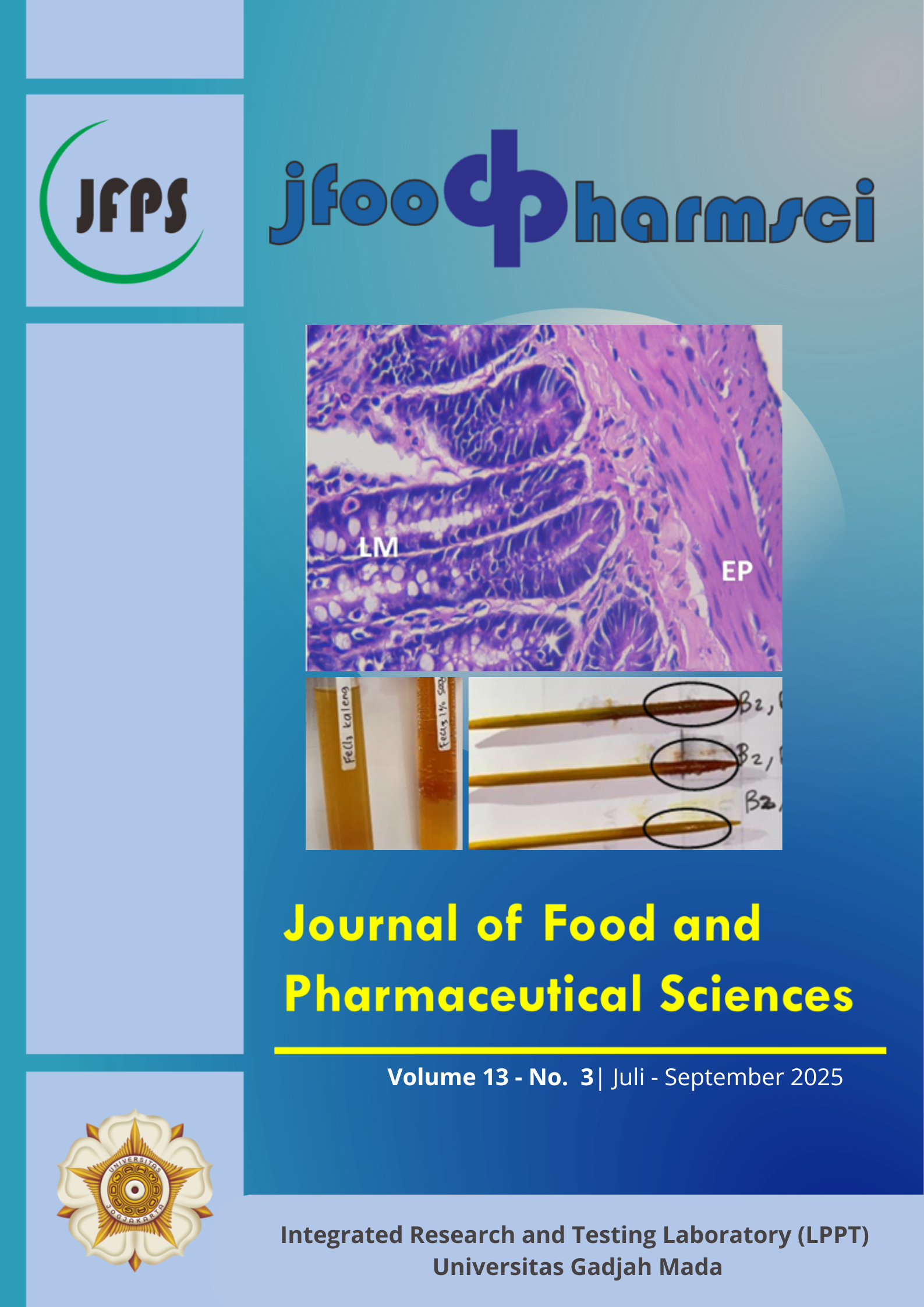Analysis of Physicochemical Properties and Quality Testing of Beef Tallow and Lard Oil Along with Identification using FTIR and GC-MS
Abstract
The halal industry is rapidly growing worldwide, especially in Indonesia, which has the largest Muslim population and abundant natural resources. This study aims to analyze the physicochemical properties and quality of beef tallow and lard oil, as well as to identify differences in FTIR and GC-MS spectra to distinguish between these two animal fats.The results show that lard oil has a higher extraction yield (30%) compared to beef tallow (17%). Lard oil also has a higher iodine value (53 g), indicating a greater proportion of unsaturated fatty acids, making it suitable for culinary applications. Conversely, beef tallow has a lower peroxide value (5 meq O₂/kg), indicating better resistance to oxidation.FTIR analysis reveals differences in functional groups, with lard oil showing a higher degree of unsaturation. GC-MS analysis identifies important compounds such as 9-octadecenoic acid methyl ester in lard oil, while beef tallow is dominated by tetradecanoic acid methyl ester.This study emphasizes the need for the development of Indonesian National Standards (SNI) to ensure product quality and halal compliance. These findings provide important insights for the halal industry and food safety in Indonesia, as well as encouraging further research on the composition of animal fats.
































